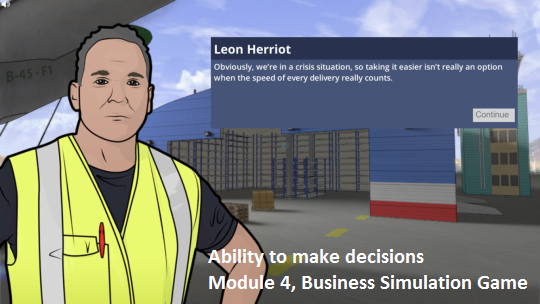ABILITY TO MAKE DECISIONS - SOCIAL ENTREPRENEURSHIP TRAINING, MODULE 4

MODULE OBJECTIVES – WHAT CAN YOU LEARN FROM THIS MODULE?
You will be able:
- to understand the decision making and problem solving process.
- to learn about a basic tool to choose between different options in the making decision process.
- to know how personal values affect decision making process.
- to understand group decision making.
- to make effective decisions.
The module will focus on:
- Understanding decision making and problem solving.
- The process of decision making.
- Choosing between options, in the process of decision making.
- Group decision making.
LEARNING STEPS:
1. Read the introductory text on ability to make decisions: Ability to make decisions.
2. Watch the video on “Tips to improve the Decision Making Process”, and write down a resume of the main ideas of the video.
Task 1:
Can you differentiate between a „maintenance manager“ (one who preserves the status quo or reacts to situations) and a „visionary leader“, capable of anticipating, preventing, or minimizing problems, or turning a problem into an opportunity?
Search for information in the two concepts – „maintenance manager“ and „visionary leader“ – and:
- Define both and explain for each of them the advantages and the disadvantages.
- Write your opinion on each type of leader, and also explain which you consider more appropriate to your own business project.
Task 2:
Watch the following videos and write down a summary for each of the video.
Task 3:
Watch the following videos and and write an essay on the below topic:
According to Dr Arvai, “You are defining by the decision that you make. The decision that you make projects the values that you hold to the word around you”.
- How important is it to fit your personal values in your own social enterprise? Why?
- What would you do if your business partners had different values than yours?
Task 4:
Watch the following short video on „How to Make a Good Decision When Comparing Many Different Factors“, make a summary of the video.
Then using the Decision Matrix Analysis Worksheet:
- Think to an important decision to make for your business project;
- Make the decision using the following steps:
Step 1: List all of your options as the row labels on the table, and list the factors that you need to consider as the column headings. For example, if you were buying a new laptop, factors to consider might be cost, dimensions, and hard disk size.
Step 2: Next, work your way down the columns of your table, scoring each option for each of the factors in your decision. Score each option from 0 (poor) to 5 (very good). Note that you do not have to have a different score for each option. If none of them are good for a particular factor in your decision, then all options should score 0.
Step 3: The next step is to work out the relative importance of the factors in your decision. Show these as numbers from, say, 0 to 5, where 0 means that the factor is absolutely unimportant in the final decision, and 5 means that it is very important. (It’s perfectly acceptable to have factors with the same importance.)
Step 4: Now multiply each of your scores from step 2 by the values for relative importance of the factor that you calculated in step 3. This will give you weighted scores for each option/factor combination.
Step 5: Finally, add up these weighted scores for each of your options. The option that scores the highest wins!
Task 5:
Take into consideration your own business project, and imagine that your company is going through bad economic times. The situation is caused by following problems:
- the production is not as efficient as it should be;
- your sales are lower than those of your competitors;
- your staff is unmotivated;
- on some topics, the staff has outdated knowledge.
For each problem, propose a solution, make a decision for solving it.
Task 6:
Now, due to lack of time and money, you cannot solve all the problems, implement all your solutions. What is the problem you will choose to solve first? Which problem do you think it would be more beneficial to intervene for? Why?
Final task:
Watch the video on “How to make good decisions” and answer the following questions:
- Is it necessary to be optimist to make better decisions?
- Think critically and write down your opinion on what Brendon Burchard said in the video.
Download and play the module 4 of the Business Simulation Game – Ability to make decisions here.
Access the summary of the module in:
*** The Social Entrepreneurship Training was developed by Universidad Nacional de Educación a Distancia, for the I SEE YOU project, and it can be used for free by individual learners. If you plan to use the training materials in classes, workshops, training, etc., please contact us prior to the activity. Thank you!

